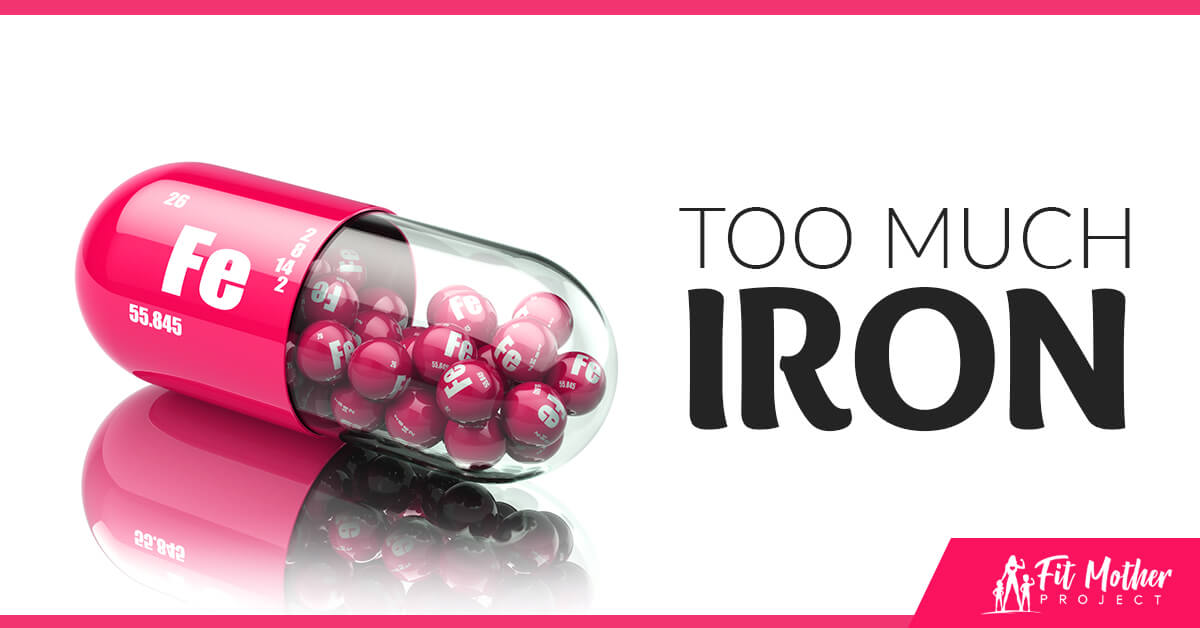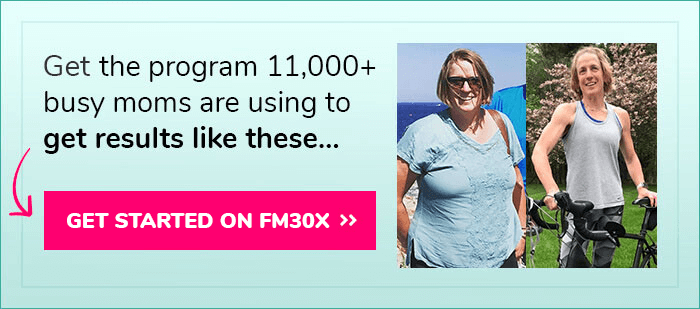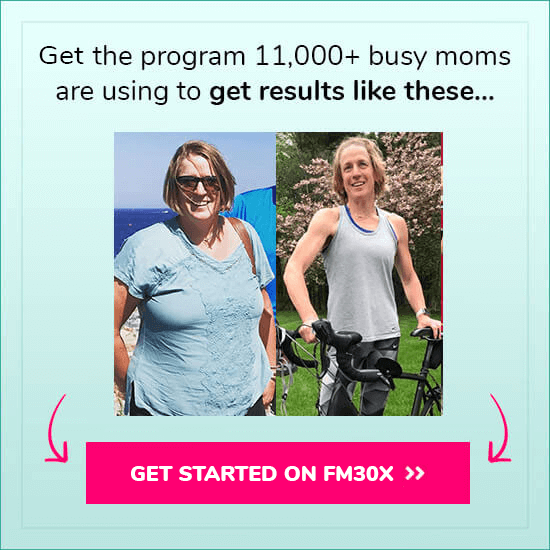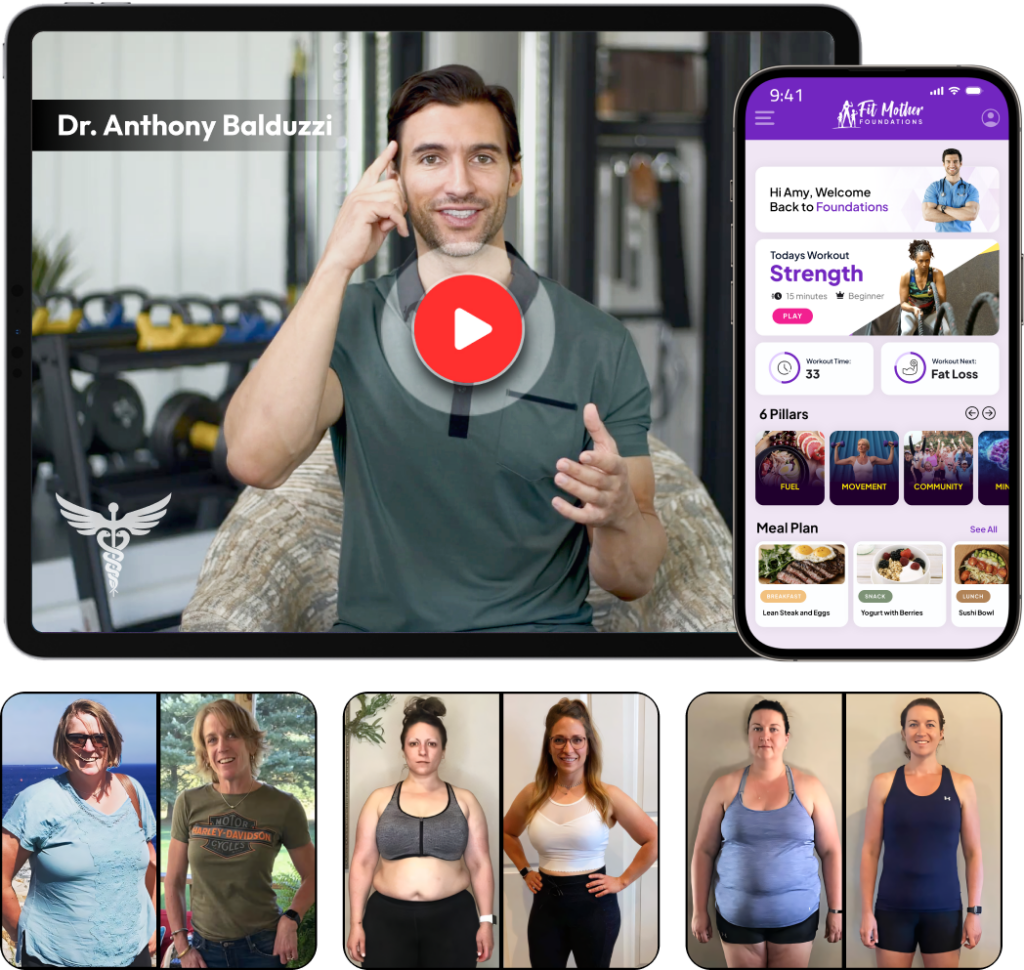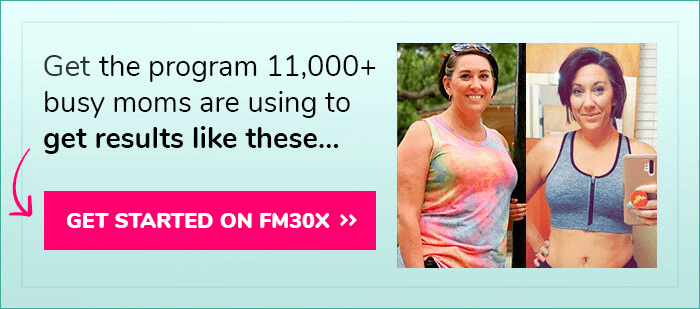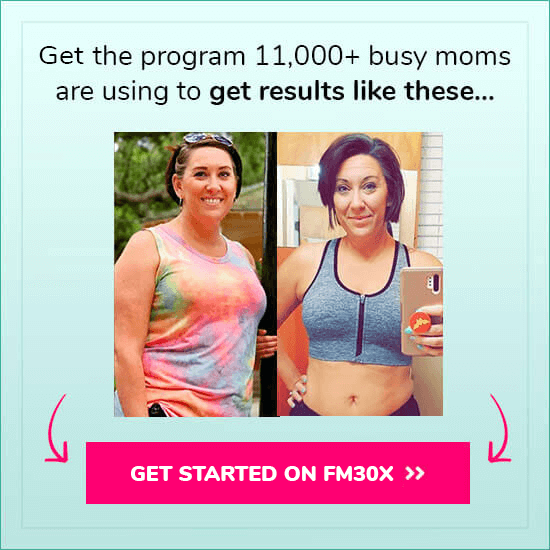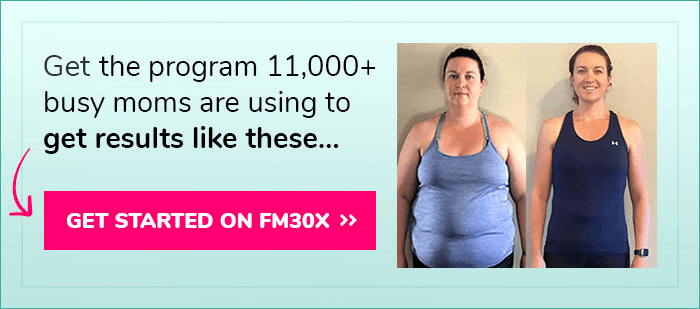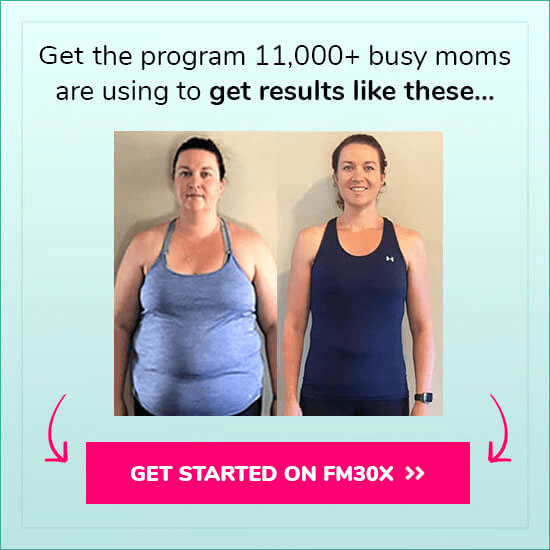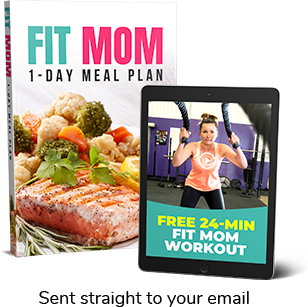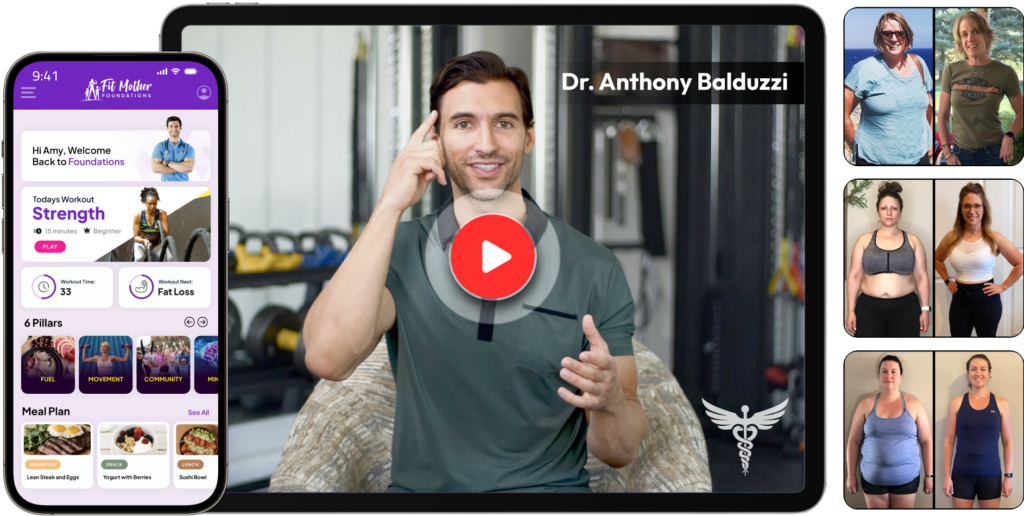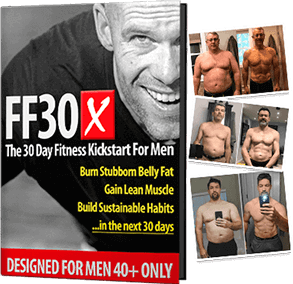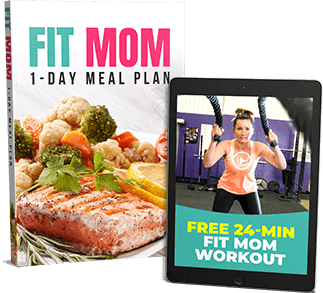Are you considering iron supplements or adding iron-rich foods to your diet? You might be wondering how much iron is too much iron.
Like any vitamin or mineral, you have to consume just the right amount of iron to meet your health needs.
Ingesting too much puts you at risk of health problems.
That's why knowing which factors increase your chance of iron overload is crucial.
Getting the right balance of iron-rich foods plus dietary supplements (as needed) is the best way to avoid iron-deficiency anemia without ingesting toxic amounts of iron.
Let's learn more about iron and how to make sure you're getting the right amounts.
Thinking about taking weight loss supplements? Read this first!
In just 6-weeks on our FOUNDATIONS Program, you'll transform your health and body, for the rest of your life!Join our 6-Week Program...
You'll Gain Health for Life!
Why is Iron Important for Women?
Until age 51, women require more iron than men because of blood losses associated with menstruation or pregnancy.
Iron is an essential nutrient your body needs on a regular basis to:
- Transfer oxygen through your blood
- Prevent iron-deficiency anemia
- Support muscle metabolism
- Make certain hormones
- Support healthy connective tissue
- Optimize neurological development
- Maintain proper cell functioning
Iron is naturally found in many foods and is available in the form of dietary supplements.
Iron is present in iron-only supplements, many multivitamins, and prenatal vitamins.
It's important to ingest the right amount of iron on a regular basis.
How Much Iron Do Women Really Need?
The amount of iron you need from foods and/or dietary supplements depends on several factors.
Examples include the number of iron stores present in your body, your age, and the amount of blood loss you experience during menstruation (if you menstruate).
Current iron recommended dietary allowances (RDAs) for women are as follows:
- 19-50 years old: 18 milligrams per day
- Age 51 and older: 8 milligrams per day
- Pregnant women: 27 milligrams per day
- Nursing women: 9 milligrams per day
You can meet these daily iron needs by eating iron-rich foods and taking multivitamin supplements containing iron as needed.
If you plan to become pregnant or are pregnant or nursing, your doctor might recommend you take a prenatal multivitamin supplement containing higher amounts of iron than traditional women's multivitamin supplements.
Follow your doctor's recommendations when it comes to taking any type of dietary supplement, as too much of a good thing can cause problems for your health.
In just 6-weeks on our FOUNDATIONS Program, you'll transform your health and body, for the rest of your life!Join our 6-Week Program...
You'll Gain Health for Life!
How Much is Too Much Iron?
Because your body stores excess iron, ingesting too much of this essential nutrient on a regular basis can lead to iron overload and the risk of medical problems.
For example, iron toxicity can contribute to the following symptoms:
- Chronic fatigue
- Hair loss
- Abdominal pain
- Joint pain
- Irregular heart rhythms
- High blood sugar levels
- Decreased sex drive
- Infertility
- Hormone problems
- Change in skin pigmentation
- Depression
Complications sometimes associated with ingesting excessive iron on a regular basis include:
- Liver damage
- Diabetes
- Thyroid problems
- Heart damage
- Pancreas problems
- Arthritis
- Neurological impairment
- Alzheimer's disease
- Liver enlargement
In 3 out of 4 cases of iron overload, people with the condition don't experience any symptoms.
If you take dietary supplements containing a large amount of iron, routine blood tests with your doctor can determine if iron levels in your body are within a normal, healthy range or too high.
The tolerable upper intake level (UL), which is the maximum safe amount of iron you can ingest daily, is 45 milligrams for women.
Consume less than this upper limit unless your doctor recommends a higher intake because of iron-deficiency anemia.
Learn how to get healthier and STAY healthy!
Should I Consume More Than 45 Milligrams?
If you have iron-deficiency anemia, your doctor may suggest you consume higher-dose iron supplements until your levels return to a normal, healthy range.
This can take several weeks or months.
For example, your medical provider might recommend you consume 100-200 milligrams of iron per day in two or more divided doses to optimize iron absorption.
Or they may suggest you try extended-release iron supplements that you only need to take once daily.
Don't ever take iron supplements containing more than 45 milligrams per day unless your doctor recommends it.
Following this rule helps you avoid over-ingesting iron and experiencing health problems over time.
In just 6-weeks on our FOUNDATIONS Program, you'll transform your health and body, for the rest of your life!Join our 6-Week Program...
You'll Gain Health for Life!
How Should I Take Iron Supplements?
While iron supplements are best absorbed on an empty stomach, they can upset your stomach or cause nausea if you don't take supplemental iron with food.
You might consider taking iron supplements with a glass of orange juice to enhance absorption and reduce feeling sick to your stomach after you ingest it.
Don't take iron supplements with caffeine, antacids, milk, or calcium supplements, as these can decrease iron absorption and make iron supplementation less effective.
What Are the Symptoms of Iron Deficiency Anemia?
While ingesting excessive amounts of iron from dietary supplements can be dangerous, not getting enough iron may cause problems for your health too.
Iron deficiency anemia can lead to the following signs or symptoms:
- Weakness
- Fatigue
- Yellow skin
- Pale skin
- Shortness of breath
- Irregular heartbeats
- Dizziness
- Lightheadedness
- Cold hands and feet
- Chest pain
- Headaches
At the first sign of iron-deficiency anemia, see your doctor for an evaluation.
A simple blood test helps them detect or rule out different types of anemia.
Learn how to keep your immune system strong to fight viruses, bacteria, and stress!
What is Hereditary Hemochromatosis?
Hereditary hemochromatosis is a genetic condition in which your body absorbs excess iron from foods or supplements.
Excess iron gets stored in your heart, liver, pancreas, and other organs.
Over time, this can increase your risk of diabetes, heart problems, liver disease, and other health problems.
If you have hereditary hemochromatosis you might experience the following signs, symptoms, or complications:
- Abdominal pain
- Joint pain
- Weakness
- Fatigue
- Diabetes
- Heart failure
- Liver failure
- Impotence
- Loss of sex drive
- Memory fog
- Gray skin
- Bronze skin color
However, some people with hereditary hemochromatosis don't have any symptoms.
If you have a family member with the condition, ask your doctor to test you for it.
If your provider diagnoses you with hereditary hemochromatosis, they might recommend treating it by removing blood from your body periodically to minimize iron build-up and your risk of complications associated with the disease.
Another treatment your provider may suggest is taking certain medications that bind to excess iron, allowing your body to eliminate it through stool and urine.
If you don't undergo blood removal for hereditary hemochromatosis your doctor might recommend you avoid taking iron supplements, multivitamin supplements containing iron, and vitamin C supplements.
A medical provider can work with you to develop a treatment based on the severity of your condition, your lifestyle, and your preferences.
Begin understanding how food affects your body and take your health to the next level!
What Are the Different Types of Iron?
There are two main types of iron found in foods and one is better absorbed by your body.
Plant-based foods and some iron-fortified foods are rich in non-heme iron, which isn't absorbed as well as the heme iron found in animal food sources (meat, poultry, eggs, and seafood).
If you follow a plant-based diet or eat mainly plant foods, aim to ingest plenty of vitamin C with these iron-rich foods, as vitamin C enhances non-heme iron absorption.
Choose citrus fruits, orange juice, bell peppers, strawberries, kiwi fruit, broccoli, or Brussels sprouts — just to name a few.
Let us show you how you can start losing weight this week! We'll email you our free meal plan & workout + email coaching.GET YOUR FREE
“FIT MOM” JUMPSTART
(MEAL PLAN + WORKOUT)
What Are Common Sources of Iron?
Eating the following foods is an excellent way to move toward reaching daily iron needs for women, without running the risk of iron overload:
- 1 serving of iron-fortified breakfast cereal: up to 18 milligrams
- 1 cup of canned white beans: 8 milligrams
- 3 ounces of cooked oysters: 8 milligrams
- 3 ounces of dark chocolate: 7 milligrams
- 1 cup of cooked lentils: 6 milligrams
- 1 cup of cooked spinach: 6 milligrams
- 1 cup of firm tofu: 6 milligrams
- 3 ounces of beef liver: 5 milligrams
- 1 cup of cooked kidney beans: 4 milligrams
- 1 cup of cooked chickpeas: 4 milligrams
- 1 cup of stewed canned tomatoes: 4 milligrams
- 3 ounces of beef: 2 milligrams
- 1 medium baked potato: 2 milligrams
- 1 cup of cooked green peas: 2 milligrams
- 2 cooked eggs: 2 milligrams
- 1 cup of cooked broccoli: 2 milligrams
- 3 ounces of sardines: 2 milligrams
- 1 ounce of cashews: 2 milligrams
- 1 cup of cooked pasta or rice: 1-2 milligrams
- 3 ounces of chicken, turkey, or tuna: 1 milligram
- 1 ounce of pistachios: 1 milligram
- 1 slice of whole-grain bread: 1 milligram
- 1/4 cup of raisins: 1 milligram
Eat a variety of iron-rich foods from animal and plant-based sources.
Or, you can consume citrus fruits, juices, or other vitamin C-rich foods with non-heme iron to optimize it's absorption.
Learn how to read nutrition information on another level!
Can Iron-Rich Foods Cause Excessive Iron?
Eating foods rich in iron is a good way to meet daily iron needs without running the risk of overdoing it.
Taking high-dose iron supplements does put you at risk of iron overload, however.
Check in with your doctor about which dose of iron you should take by itself or in a multivitamin or prenatal supplement.
Your individualized iron needs vary based on your age, life stage, risk of iron-deficiency anemia, and your body's current iron stores.
Am I Ingesting Too Much Iron?
The best way to determine if you're getting the right amount of iron through foods and supplements is to have a medical provider evaluate blood iron levels regularly.
They can use a simple blood test to assess the amount of iron present in your body.
Your doctor asks you about symptoms you may have and lets you know how much supplemental iron, if any, you should take to avoid iron deficiency or iron overload.
These 7 principles of nutrition are always true, no matter what your diet consists of.
What is an Iron-Rich Menu?
By following an iron-rich diet and taking a multivitamin supplement containing iron, you shouldn't have to worry about iron-deficiency anemia unless you're prone to developing it because of a health condition.
A sample three-day, iron-rich menu includes the following:
Day 1
Breakfast
- Iron-fortified, whole-grain breakfast cereal
- Protein-fortified milk or plant milk
- 2 eggs
- An orange or grapefruit
Snack
- A protein bar or shake
Lunch
- Grilled chicken over spinach and other leafy greens
- Tomatoes, cucumbers, mushrooms, and bell peppers
- Kidney beans
- Oil-based salad dressing
Snack
- Greek yogurt
- Cashews
- Blueberries
Dinner
- Baked turkey
- Cooked broccoli
- Brown rice
Snack (optional)
- Lentil soup
- Reduced-fat shredded cheese
Improve your lifestyle and nutrition by incorporating these healthy meals you can eat every day.
Day 2
Breakfast
- Egg, spinach, and white bean omelet
- Whole-grain toast
- Avocado slices
Snack
- Low-fat cottage cheese
- Pistachios
Lunch
- Turkey, tomato, and bean chili
- Strawberries
Snack
- Banana
- Plain kefir
Dinner
- Grilled chicken or tofu
- Sweet potatoes
- Asparagus
Snack (optional)
- A protein shake or bar
Follow our eating schedule to lose weight fast! These meal timing setups are tested and PROVEN to work.
Day 3
Breakfast
- Cooked oatmeal with raisins
- Uncured turkey bacon
- Protein-fortified almond milk
Snack
- Dry roasted chickpeas (baked in olive oil)
Lunch
- Canned light tuna with tomatoes, cucumbers, and avocados over leafy greens or whole-grain bread
- Greek yogurt
Snack
- A protein shake or bar
Dinner
- Grilled chicken, shrimp, lean beef, or tofu and vegetable kabobs
- Brown rice, wild rice, quinoa, green peas, beans, or other legumes
Snack (optional)
- Grapes
- Pumpkin seeds
This video will provide you with a guide to easy meal prepping for weight loss for you and your busy family.
Bottom Line
When trying to determine how much iron you need, keep in mind the following considerations:
Age
If you're over age 50 and no longer menstruating, your daily iron needs decrease significantly from 18 milligrams to 8 milligrams per day.
Keep this in mind when choosing a multivitamin supplement designed for your age and gender group.
Most supplements are specifically made for younger men, older men, younger women, older women, children, or pregnant or nursing women.
Ask your doctor which dietary supplement brand and amount of iron is right for you.
Menstruation
If you're menstruating, your daily iron needs are often higher than non-menstruating women.
This is especially true if you experience heavy menstrual periods, as iron is an important component of blood cells.
If you bleed heavily and have symptoms of iron-deficiency anemia, see your doctor right away for an evaluation.
Pregnancy
During pregnancy, your iron needs increase significantly – from 18 milligrams to 27 milligrams per day.
Choose a prenatal vitamin supplement containing this amount of iron to meet increases in iron demands from you and your unborn baby.
Hereditary Hemochromatosis
If you have hereditary hemochromatosis, talk with your doctor about your personalized daily iron needs and medical treatments that can prevent iron from building up in your body.
The type of treatment you undergo determines how much iron you can safely consume from foods, supplements, or both.
Find out how YOU can live a long and healthy life with this one simple philosophy.
Next Steps
To learn more about healthy lifestyle habits, try the Fit Mother Project meal and exercise plans for busy moms just like you.
Upon joining you receive custom meal plans, menus, the weekly newsletter, recipes, health coaching support, and much more.
Sign up for a free meal plan and workout and get started today!
Erin Coleman is a registered and licensed dietitian with over 15 years of freelance writing experience. She graduated with her Bachelor of Science degree in nutritional science from the University of Wisconsin-Madison, and completed her dietetic internship at Viterbo University in La Crosse, Wisconsin. Prior to beginning her career in medical content writing, Erin worked as Health Educator for the University of Wisconsin-Madison Department of Internal Medicine. Her published work appears on hundreds of health and fitness websites, and she’s currently working on publishing her first book! Erin is a wife, and a Mom to two beautiful children.
Fit Mother Project is the answer you’ve been looking for. Inside the program, you’ll receive: Our Fit Mother 30X Program (FM30X) is the answer you’ve been looking for. Inside FM30X, you’ll receive: The FOUNDATIONS Program is created by Dr. Anthony Balduzzi for Women 40+ who want Lifelong Health. In just 6-Weeks following FOUNDATIONS, you'll experience: FOUNDATIONS has transformed 60,000 lives! Are you ready to experience true lasting health & results?If you’re a busy mom who wants to finally lose weight,
get healthy, and actually keep the pounds off for good,
this is the simple program you’ll love sticking to…
If you’re a busy mom who wants to finally lose weight,
get healthy, and actually keep the pounds off for good,
this is the simple program you’ll love sticking to…
LEARN MORE ABOUT FM30X »

Learn More About FM30X

Join our 6-Week Doctor Designed Health Program.
You'll Gain Foundational Health for the Rest of Life.
*Please know that weight loss results & health changes/improvements vary from individual to individual; you may not achieve similar results. Always consult with your doctor before making health decisions. This is not medical advice – simply very well-researched info on how much iron is too much iron.

